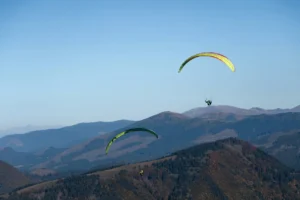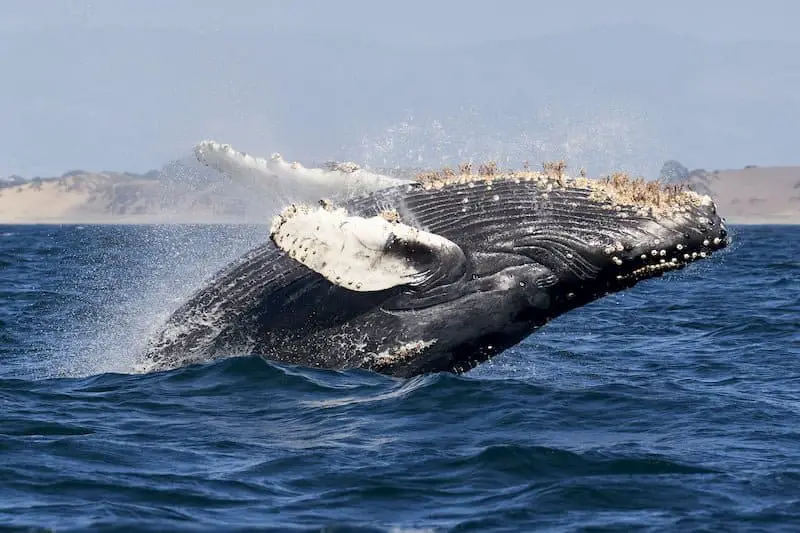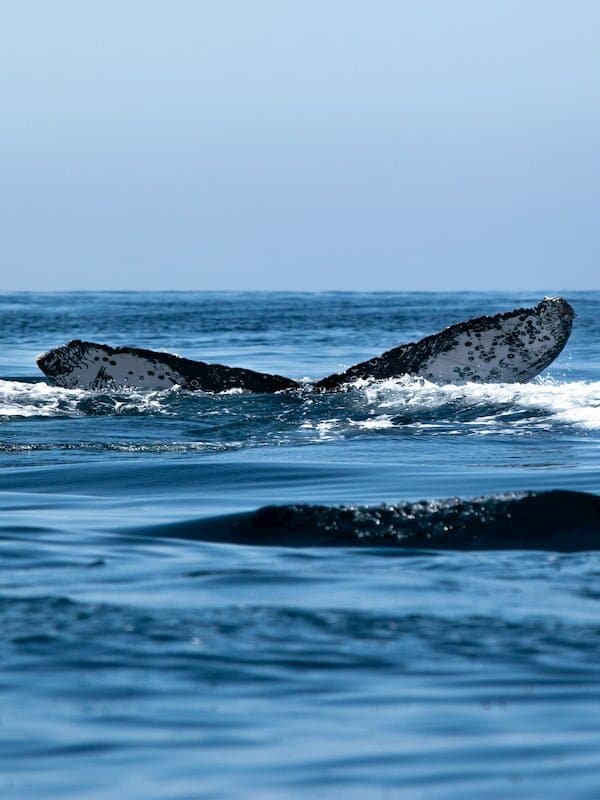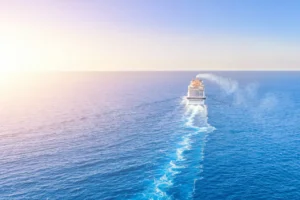
Best Skydiving Locations: Your Bucket List
One of the most astounding activities that combines an adrenaline rush and stunning views is skydiving. It is an experience like no other. There are
If you are lucky enough to be in Queensland during the Winter months of July and November, take the opportunity to visit the official Whale Heritage Site of Hervey Bay for a once in a lifetime chance to see majestic Humpback whales up close and personal.
Table of Contents
ToggleHervey Bay is a 3.5 hour easy drive North of Brisbane, the capital of Queensland and is so worth the trip. Along with the Humpback whales, which can often be spotted from the beach, you can enjoy delicious fresh fish with ocean views, stroll along Urangan’s Pier Park or take a trip over to the beautiful Fraser Island (probably sighting a few more whales and dolphins as you go).
Too book your whale watching, see our Whale Watching Hervey Bay tour information page.

Hervey Bay isn’t just a great holiday destination for humans, it also seems to be the perfect location for a whale layover. The whales in Hervey Bay are amongst some of the most well travelled in the world, covering over 5,000km during their migration from Antarctica to the tropical waters of the Great Barrier Reef. They often stay in the bay for several days before either continuing to their breeding ground in Fraser Island or making their return journey to Antarctica.
Although Humpback whales usually travel alone or in small groups, they seem to interact more in Hervey Bay with larger groups often being seen and there have been days when as many as 200 whales have been seen in the bay.
The 800 square miles of water in Hervey Bay are shallow and calm, being protected from the weather by Fraser Island and to some extent from their natural predators of killer whales and sharks. New born calves, year old youngsters and adult whales alike can safely rest, play, socialise and practise their blowhole spurts, tail slaps and acrobatic breaching which makes for some spectacular displays.
The whale watching season lasts from mid-July through to November although you still may see whales outside of these dates. Many of the boat trip operators offer a full refund if you don’t spot any whales which gives you an idea of just how many visit Hervey Bay!
Early on, from July to August you are likely to see young whales making their first migration. The end of July/beginning of August also coincides with the Hervey Bay Whale Festival. The festival is an opportunity for locals and visitors to celebrate the Humpback whales as well as promote conservation in this unique marine region. With concerts, a mass stand up paddle board, a kite carnival and a seafood festival it’s a diverse event with something for everyone.
In September you’ll be able to watch mothers teaching this years’ calves all the skills they need to complete their long journey back to Antarctica. The babies have much smaller lungs than their mothers which means that they surface more often for a breath and you can often see them practising their breaching over and over until Mum pops up to show them how it is done!
Later on, into October the larger males (bulls) arrive in Hervey Bay. The bulls will put on exhilarating displays, slapping their 5 meter long tails on the surface of the ocean (lobtailing) and launching their 40 ton bodies out of the water as they breach. These displays are thought to be a courting ritual to impress the females and assert dominance over other males.
Around this time, you might be lucky enough to hear some whale song. Research has suggested that males sing to attract females and to communicate with other males. Whilst you can hear the whale song above water, some boats have hydrophones that they drop into the ocean so you can listen to it. Underwater the sound travels for miles (so don’t panic if you are snorkelling some distance away and hear it)!
At the end of the season when the Humpbacks are heading back to Antarctica the weather can worsen making the conditions in the bay rough. This can result in trip cancellations and is not great for anyone who suffers from motion sickness. However, the Humpback whales usually travel closer to the shoreline so this time of year has good options for whale watching from the beach.
A respectful and harmonious coexistence between the human community and the oceanic environment is one of the considerations that the World Cetacean Alliance takes into account before awarding the Whale Heritage Site accolade. You can be assured that the whale watching operators in Hervey Bay work with the greatest respect for these awe-inspiring animals.
There are several fantastic operators to choose from in Hervey Bay, all of whom carefully follow the Maritime Safety Guidelines for whale watching operations. Due to the calm waters in Hervey Bay, most of the boats have open decks with well thought out viewing positions to give you the best opportunity to see the whales. If you suffer from seasickness you might want to opt for one of the larger boats which are extremely stable.
You can choose a boat with glass bottom viewing windows or with a drop down platform which takes you down to the water level. Either choice will give you an unforgettable close up when the whale pops up to have a look at you.
Some operators offer all day tours, you can go out on a sailing catamaran or you can explore further afield into the breeding ground of Fraser Island. If you want a bit more variety, choose a whale and dolphin watching cruise or if your love of food comes close to your love of nature try one of the trips that offer truly exceptional culinary delights for your lunch.
The whale watching operators of Hervey Bay all work together to give you a top level service. They share sightings over radio so you really do have the best chance of spotting Humpback whales whoever you decide to take your trip with.
What to wear?
It is Winter and although the cabin will be toasty warm, there’s a good chance that you’ll be getting wet on a potentially windy open deck. We recommend a waterproof jacket, long trousers and some sensibly grippy shoes – you don’t want to be worrying about slipping when you’re out on the deck, eye to eye with a 40 ton Humpback whale!
If the weather looks iffy it could be worth packing something dry to change into once you are heading back to shore.
Don’t forget your camera!
You will have some breath-taking moments and if you’re lucky you’ll be able to capture them on your camera. Don’t worry if you don’t have a mega zoom camera with you. Humpback whales are about the size of a school bus and often as interested in us,as we are in them so they come very close. In fact, some of them indulge in a behaviour called ‘mugging’ where they stay with a boat and interact with the passengers, often diving under and surfacing on the other side getting everyone on board to rush from side to side!
Along with your camera, screen wipes are not a bad idea. The first sign of a whale surfacing is the ‘blow’ which is a mix of exhaled air and mucus – a bit like us blowing our noses after a swim. It’s all part of the experience and absolutely hilarious when it lands on your friend. If it does get on your camera lens it’s easier to wipe it off straight away than later on when it dries. It’s also pretty smelly so this is where a change of clothes for later can come in handy.
Once you are onboard, you might need a few ‘whaley’ good facts to impress your fellow whale watchers with:
If you can’t make it to Hervey Bay the good news is that you can catch the whale migration somewhere else on the Queensland coast.
Here are some alternative whale watching destinations:
The Gold Coast – the migration starts and ends here so the best time to catch the whales is July or October.
Brisbane – take a tour from the Queensland capital or try some shoreline spotting from North Stradbroke Island when the Humpbacks pass close by.
Sunshine Coast – our next stop for whale sightings is Mooloolaba (which is also where the first swimming with whales experience was established in Australia).
The Southern Great Barrier Reefs – if you’re further North, take the opportunity to combine your whale watching trip with the chance to explore the Keppel Bay Islands national park.
The Whitsunday Islands – the final destination for our Humpback whales. This is the safe, warm water nursery where the whales choose to give birth and you have the chance to meet this season’s new babies.
Tropical North Queensland – the ‘other’ Queensland whales. The enigmatic Dwarf Minke whales visit Ribbons Reef every year in June and July. As yet, no one has managed to tag a Dwarf Minke whale so their migration pattern is still a mystery to us.
Book your Whale Watching Once In a Lifetime Adventure with QLD Travel.


One of the most astounding activities that combines an adrenaline rush and stunning views is skydiving. It is an experience like no other. There are

Luxury cruises offer a distinctive travel experience, going beyond the typical cruise vacation. It’s a way to explore the world in style, comfort, and an

Exploring the Hunter Valley: A Journey Through Australia’s Wine Country The Hunter Valley, nestled in New South Wales, Australia, is one of the country’s
Subscribe to our newsletter for special promotions and our latest news
Copyright © 2021. Website & SEO Melbourne by
SEOEmpire.com.au